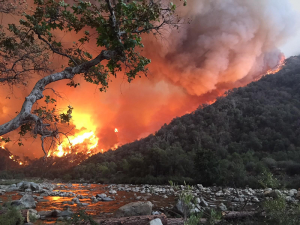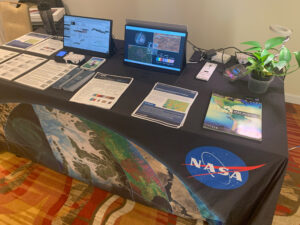
Details via Kurtis J. Nelson and Daniel Steinwand, U.S. Geological Survey (USGS) Earth Resources Observation and Science (EROS) Center:
Annual disturbance maps are produced by the LANDFIRE program across the conterminous United States (CONUS). Existing LANDFIRE disturbance data from 1999 to 2012 are available. A tiling and compositing approach was developed to produce bi-annual images optimized for change detection. A tiled grid of 10,000 × 10,000 30m pixels was defined for CONUS and adjusted to consolidate smaller tiles along national borders, resulting in 98 non-overlapping tiles. Data from Landsat-5,-7, and -8 were re-projected to the tile extents, masked to remove clouds, shadows, water, and snow/ice, then composited using a cosine similarity approach. The resultant images were used in a change detection algorithm to determine areas of vegetation change. This approach enabled more efficient processing compared to using single Landsat scenes by taking advantage of overlap between adjacent paths, and allowed an automated system to be developed for the entire process. Access the report from Photogrammetric Engineering & Remote Sensing.

Landsat & LCLUC: Science Meeting Highlights
Outreach specialists from the Landsat Communications and Public Engagement team participated in community engagement efforts at the joint NASA and University of Maryland Land Cover Land Use Change (LCLUC) meeting.





